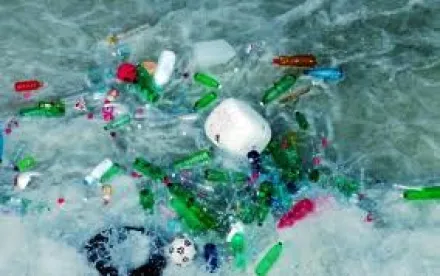The U.S. Environmental Protection Agency published proposed revisions to Hazardous Waste Generator regulations in September 2015. The public comment for the proposed revisions closed at the end of December 2015 and the revisions are currently planned to be published as final in October 2016. Revisions to definitions, hazardous waste identification requirements, and hazardous waste generator standards could impact any facility that generates hazardous waste.
 The intent of the proposed rule revisions are to address gaps in the regulations, provide greater flexibility managing hazardous waste in a cost-effective manner, and making general language updates (e.g. technical corrections, removal of obsolete references, improved readability, and clarification of ambiguities). While some items like hazardous waste determinations, labeling, closure requirements, and contingency planning have become more stringent, items like waste consolidation at CESQGs, episodic waste generation, and the waiver from the 50-foot rule have become less stringent.
The intent of the proposed rule revisions are to address gaps in the regulations, provide greater flexibility managing hazardous waste in a cost-effective manner, and making general language updates (e.g. technical corrections, removal of obsolete references, improved readability, and clarification of ambiguities). While some items like hazardous waste determinations, labeling, closure requirements, and contingency planning have become more stringent, items like waste consolidation at CESQGs, episodic waste generation, and the waiver from the 50-foot rule have become less stringent.
What are the main revisions to the rules?
The updated regulations have several items that will affect hazardous waste generating facilities. Highlights include:
-
Changing conditionally exempt small quantity generators (CESQGs) to very small quantity generators (VSQG).
-
Adding definitions for large quantity generator (LQG) and VSQG; and revising the small quantity generator (SQG) definition.
-
Defining “central accumulation area” as any on-site hazardous waste accumulation area that is subject to additional generator standards.
-
Addition of a provision to explain what generator category applies to an entity that generates both acute and non-acute HW in the same calendar month.
-
Revisions to the regulations that address the mixing of a non-hazardous waste with a hazardous waste.
-
Amendment to allow CESQGs to send their hazardous waste to LQGs that are operated under control of the same person.
-
Revisions to the regulations for making hazardous waste determinations.
-
Revising labeling requirements, including notations that indicate that hazardous waste is present, identifying chemical names, and listing potential hazards.
-
Revisions to the closure provisions and biennial reporting requirements for LQGs.
-
Updates to the preparedness, prevention, planning, and emergency procedures and satellite accumulation area provisions for SQGs and LQGs.
-
Revisions to the SQG regulations for accumulating hazardous waste on drip pads.
-
Addition of a provision that hazardous waste generators are prohibited from disposing liquid hazardous waste in landfills; and
-
Revisions applicable to hazardous waste transporters and treatment, storage, and disposal facilities (TSDFs).
Rule Adoption and Implementation
-
The rule is not automatically effective in RCRA authorized states, although many states incorporate the federal regulations by reference.
-
RCRA authorized states that do not adopt the new federal requirement, need to adopt rules that are at least if not more stringent.
-
Although a compliance date has yet to be established, U.S. EPA typically provides a 6 month effective date window from final rule publication date.
How to Prepare for the Final Revisions
-
Review/update waste characterization documentation for HWs and solid wastes.
-
Review waste generation status.
-
Evaluate labeling and marking procedures at your facility.
-
Check Hazardous Waste training program(s) and records.
-
Review/update contingency plans and agreements with local emergency responders.
-
Assess compliance with the RCRA air emission standards for process vents, equipment leaks, and tanks, containers, or surface impoundments.
Additional information regarding the Hazardous Waste Generator Rule revisions can be found here. The Federal Register Publication of the final rule is available here.
This post is provided by our guest author, Karen Lutz, from TRC Environmental Corporation




 />i
/>i

